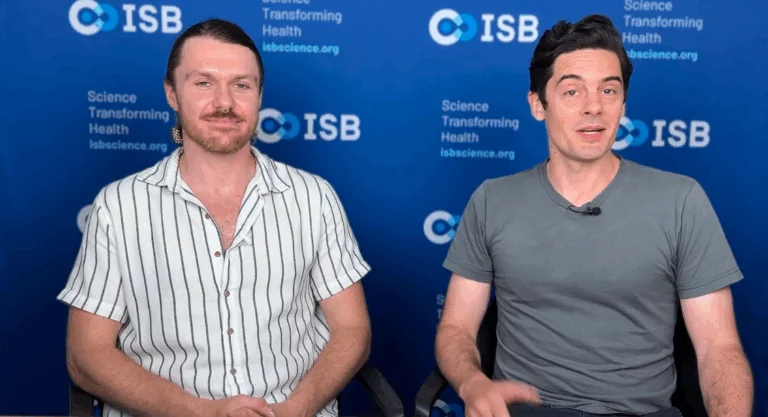A Simpler, Smarter Way to Measure Gut Bacterial Biomass
ISB scientists have developed a simple, low-cost method to measure the total amount of bacteria in the gut using existing sequencing data. This breakthrough could speed up microbiome research and unlock new insights into health and disease.

Scientists at the Institute for Systems Biology (ISB) have developed a more efficient and cost-effective gut bacterial biomass measurement – a critical but often overlooked factor in microbiome research. This new method, published in the journal mSystems, could significantly simplify the process of quantifying bacterial biomass from existing and future stool metagenomic data, and potentially accelerate discoveries related to health and disease.
The research team, led by University of Washington Master’s student Gechlang Tang and ISB Associate Professor Dr. Sean Gibbons, introduced a straightforward approach that estimates bacterial biomass in stool samples using the ratio of bacterial-to-host DNA reads – known as the B:H ratio. Unlike current standard methods, which often require expensive equipment, complicated lab workflows, or machine learning, the B:H method relies solely on information contained within a stool metagenome.
“Absolute bacterial biomass is a key metric that’s often left out of microbiome studies,” Tang said. “Our method allows researchers to extract this information directly from sequencing data, without any added cost or experimental complexity.”
Why Biomass Matters
Most gut microbiome studies focus on relative abundance – how much of one bacterial species is present compared to another. However, understanding the absolute amount of bacteria present – the total biomass – is crucial for painting a comprehensive picture of the gut ecosystem. Fluctuations in biomass can signal changes in health status, track responses to antibiotics, or reveal how diet influences the gut.
Traditional methods for estimating biomass, such as flow cytometry or qPCR, are time-consuming and vulnerable to errors caused by variations in water content, DNA extraction efficiency, and other technical factors. They’re also rarely included in large-scale or retrospective studies due to their complexity. And machine learning methods for predicting biomass directly from metagenomes have relied on the biased metrics described above for model training.
The B:H ratio solves many of these problems by using host DNA as a kind of natural, internal spike-in. The researchers found that the amount of host DNA in stool remains relatively stable across individuals and over time, providing a consistent normalization factor for measuring bacterial abundance.
Robust and Ready for the Real World
To validate the method, the ISB team compared B:H ratios to multiple gold-standard measurements across hundreds of samples from human and animal studies. They found strong agreement with established techniques – without the need for extra experimental measurements or training data. Notably, the approach held up even when human DNA had been partially removed (a common preprocessing step in microbiome studies), making it compatible with public data sets.
The method also proved reliable across healthy individuals and patients with diseases like inflammatory bowel disease (IBD) and cardiometabolic conditions. In one case, the team tracked gut bacterial depletion and recovery in humans and mice following antibiotic treatment. The B:H ratio captured dramatic drops in biomass – up to 400-fold in mice – and rapid rebounds after treatment stopped.
Implications for the Public
While this advance is designed for researchers, its downstream impact could be far-reaching. More accurate and accessible bacterial biomass quantification could help scientists:
- Better understand how gut microbes influence digestion, health, and disease
- Identify early warning signs of diseases like IBD or colon cancer
- Track recovery after antibiotic use or other medical treatments
“This method lowers the barrier for including bacterial biomass in microbiome studies,” Gibbons said. “That means more researchers can ask better questions about the gut microbiome and its impacts on human health.”
A Step Toward Smarter Microbiome Science
By turning a once-overlooked byproduct of sequencing – host DNA – into a powerful normalization tool, ISB scientists are helping shift the field toward more quantitative, reproducible, and clinically actionable microbiome science.
The work also reinforces ISB’s broader mission: to transform how we understand and improve human health through systems-level insights and innovative computational and analytical tools.
“With this study, we’re showing that you can do more with less,” said Tang. “And that’s good news for researchers – and for anyone whose health depends on a thriving gut microbiome.”


